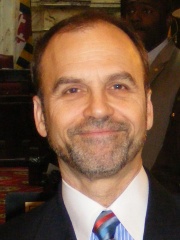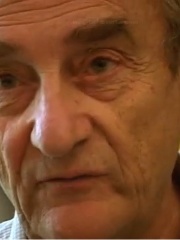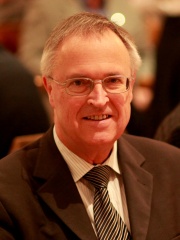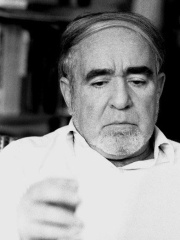WRITER
Fredric Wertham
1895 - 1981

 Fredric Wertham
Fredric Wertham
Fredric Wertham (; born Friedrich Ignatz Wertheimer, March 20, 1895 – November 18, 1981) was a German–American psychiatrist and author. Wertham had an early reputation as a progressive psychiatrist who treated poor black patients at his Lafargue Clinic at a time of heightened discrimination in urban mental health practice. Wertham also authored a definitive textbook on the brain, and his institutional stressor findings were cited when courts overturned multiple segregation statutes, most notably in Brown v. Board of Education. Read more on Wikipedia
His biography is available in 18 different languages on Wikipedia (up from 17 in 2024). Fredric Wertham is the 5,561st most popular writer (up from 5,797th in 2024), the 5,078th most popular biography from Germany (up from 5,214th in 2019) and the 325th most popular German Writer.
Memorability Metrics
Page views of Fredric Wertham by language
Among WRITERS
Among writers, Fredric Wertham ranks 5,561 out of 7,302. Before him are Cyril M. Kornbluth, Jan Parandowski, Dimitar Dimov, Candy Barr, Scott Turow, and Michel Deguy. After him are Thomas Bailey Aldrich, Irmtraud Morgner, Patrick Rothfuss, Clara Reeve, George Lillo, and James C. Collins.
Most Popular Writers in Wikipedia
Go to all RankingsCyril M. Kornbluth
1923 - 1958
HPI: 54.22
Rank: 5,555
Jan Parandowski
1895 - 1978
HPI: 54.21
Rank: 5,556
Dimitar Dimov
1909 - 1966
HPI: 54.21
Rank: 5,557
Candy Barr
1935 - 2006
HPI: 54.20
Rank: 5,558
Scott Turow
1949 - Present
HPI: 54.19
Rank: 5,559
Michel Deguy
1930 - 2022
HPI: 54.19
Rank: 5,560
Fredric Wertham
1895 - 1981
HPI: 54.19
Rank: 5,561
Thomas Bailey Aldrich
1836 - 1907
HPI: 54.19
Rank: 5,562
Irmtraud Morgner
1933 - 1990
HPI: 54.18
Rank: 5,563
Patrick Rothfuss
1973 - Present
HPI: 54.17
Rank: 5,564
Clara Reeve
1729 - 1807
HPI: 54.17
Rank: 5,565
George Lillo
1691 - 1739
HPI: 54.16
Rank: 5,566
James C. Collins
1958 - Present
HPI: 54.16
Rank: 5,567
Contemporaries
Among people born in 1895, Fredric Wertham ranks 269. Before him are Shemp Howard, Albert White, Adrienne Bolland, Doris Humphrey, Sándor Gombos, and Jan Parandowski. After him are Lawrence Shields, Väinö Ikonen, Blossom Rock, Phyllis Covell, Sidney Blackmer, and Cecil McMaster. Among people deceased in 1981, Fredric Wertham ranks 224. Before him are Louis Kuehn, Julio Quintana, Vera-Ellen, János Pilinszky, Leonard Howell, and Ichikawa Fusae. After him are Jack Cameron, Antonio Suárez, Stefanie Clausen, Bob Hite, Börje Tapper, and Leopold Wohlrab.
Others Born in 1895
Go to all RankingsShemp Howard
ACTOR
1895 - 1955
HPI: 54.41
Rank: 264
Albert White
ATHLETE
1895 - 1982
HPI: 54.41
Rank: 265
Adrienne Bolland
PILOT
1895 - 1975
HPI: 54.39
Rank: 266
Doris Humphrey
DANCER
1895 - 1958
HPI: 54.36
Rank: 267
Sándor Gombos
POLITICIAN
1895 - 1968
HPI: 54.34
Rank: 268
Jan Parandowski
WRITER
1895 - 1978
HPI: 54.21
Rank: 269
Fredric Wertham
WRITER
1895 - 1981
HPI: 54.19
Rank: 270
Lawrence Shields
ATHLETE
1895 - 1976
HPI: 54.12
Rank: 271
Väinö Ikonen
ATHLETE
1895 - 1954
HPI: 54.02
Rank: 272
Blossom Rock
ACTOR
1895 - 1978
HPI: 53.97
Rank: 273
Phyllis Covell
TENNIS PLAYER
1895 - 1982
HPI: 53.86
Rank: 274
Sidney Blackmer
ACTOR
1895 - 1973
HPI: 53.78
Rank: 275
Cecil McMaster
ATHLETE
1895 - 1981
HPI: 53.76
Rank: 276
Others Deceased in 1981
Go to all RankingsLouis Kuehn
ATHLETE
1901 - 1981
HPI: 54.68
Rank: 218
Julio Quintana
SOCCER PLAYER
1904 - 1981
HPI: 54.50
Rank: 219
Vera-Ellen
ACTOR
1921 - 1981
HPI: 54.50
Rank: 220
János Pilinszky
WRITER
1921 - 1981
HPI: 54.47
Rank: 221
Leonard Howell
WRITER
1898 - 1981
HPI: 54.29
Rank: 222
Ichikawa Fusae
POLITICIAN
1893 - 1981
HPI: 54.22
Rank: 223
Fredric Wertham
WRITER
1895 - 1981
HPI: 54.19
Rank: 224
Jack Cameron
ATHLETE
1900 - 1981
HPI: 54.19
Rank: 225
Antonio Suárez
CYCLIST
1932 - 1981
HPI: 54.14
Rank: 226
Stefanie Clausen
POLITICIAN
1900 - 1981
HPI: 54.13
Rank: 227
Bob Hite
SINGER
1943 - 1981
HPI: 54.11
Rank: 228
Börje Tapper
SOCCER PLAYER
1922 - 1981
HPI: 54.10
Rank: 229
Leopold Wohlrab
POLITICIAN
1912 - 1981
HPI: 53.99
Rank: 230
In Germany
Among people born in Germany, Fredric Wertham ranks 5,081 out of 7,253. Before him are Bernd Franke (1948), Kurt Hoffmann (1910), Rudolf Haag (1922), Gunhild Hoffmeister (1944), Björn Engholm (1939), and Halil Altıntop (1982). After him are Hans Schlegel (1951), Thomas Reiter (1958), Irmtraud Morgner (1933), Wolfgang Seguin (1945), Hans Eichel (1941), and Paul Falk (1921).
Others born in Germany
Go to all RankingsBernd Franke
SOCCER PLAYER
1948 - Present
HPI: 54.22
Rank: 5,075
Kurt Hoffmann
FILM DIRECTOR
1910 - 2001
HPI: 54.21
Rank: 5,076
Rudolf Haag
PHYSICIST
1922 - 2016
HPI: 54.20
Rank: 5,077
Gunhild Hoffmeister
ATHLETE
1944 - Present
HPI: 54.20
Rank: 5,078
Björn Engholm
POLITICIAN
1939 - Present
HPI: 54.20
Rank: 5,079
Halil Altıntop
SOCCER PLAYER
1982 - Present
HPI: 54.19
Rank: 5,080
Fredric Wertham
WRITER
1895 - 1981
HPI: 54.19
Rank: 5,081
Hans Schlegel
ASTRONAUT
1951 - Present
HPI: 54.18
Rank: 5,082
Thomas Reiter
ASTRONAUT
1958 - Present
HPI: 54.18
Rank: 5,083
Irmtraud Morgner
WRITER
1933 - 1990
HPI: 54.18
Rank: 5,084
Wolfgang Seguin
SOCCER PLAYER
1945 - Present
HPI: 54.17
Rank: 5,085
Hans Eichel
POLITICIAN
1941 - Present
HPI: 54.17
Rank: 5,086
Paul Falk
SKATER
1921 - 2017
HPI: 54.17
Rank: 5,087
Among WRITERS In Germany
Among writers born in Germany, Fredric Wertham ranks 325. Before him are Peter Härtling (1933), Carl Amery (1922), Nathan Zach (1930), Marina Lewycka (1946), Günter de Bruyn (1926), and Gorch Fock (1880). After him are Irmtraud Morgner (1933), Karl Leberecht Immermann (1796), Ludwig Ganghofer (1855), Franz Xaver Kroetz (1946), Adolf Bartels (1862), and H. A. Rey (1898).
Peter Härtling
1933 - 2017
HPI: 54.42
Rank: 319
Carl Amery
1922 - 2005
HPI: 54.40
Rank: 320
Nathan Zach
1930 - 2020
HPI: 54.34
Rank: 321
Marina Lewycka
1946 - 2025
HPI: 54.26
Rank: 322
Günter de Bruyn
1926 - 2020
HPI: 54.25
Rank: 323
Gorch Fock
1880 - 1916
HPI: 54.25
Rank: 324
Fredric Wertham
1895 - 1981
HPI: 54.19
Rank: 325
Irmtraud Morgner
1933 - 1990
HPI: 54.18
Rank: 326
Karl Leberecht Immermann
1796 - 1840
HPI: 54.04
Rank: 327
Ludwig Ganghofer
1855 - 1920
HPI: 53.99
Rank: 328
Franz Xaver Kroetz
1946 - Present
HPI: 53.85
Rank: 329
Adolf Bartels
1862 - 1945
HPI: 53.84
Rank: 330
H. A. Rey
1898 - 1977
HPI: 53.69
Rank: 331

























































